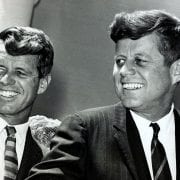How many times in our lives do we stand at a place where all things seem lost? These times of distress are inevitable and will visit all, both the weak and the mighty.
“Arise, walk about the land through its length and breadth; for I will give it to you.”
Genesis [13:17]
WALKING THE TRAILS
On March 30th, Connie and I will attempt to walk the Appalachian Trail, from Springer Mountain, Georgia to Mount Katahdin, Maine. This is a journey of almost 2200 miles. We expect this trip will take close to six months.
Some interesting notes about the Appalachian trail are:
- The trail crosses 14 states.
- The highest point on the trail is Clingsman Dome in North Carolina at 6643 feet.
- The average hiker takes 165 days to complete.
- Volunteers maintain the trail, spending close to 250,000 hours on maintenance.
- One and four hikers finish.
- Each day of walking is equal to 5500 calories burned.
- The average hiker goes through 4-5 pairs of shoes.
Why are we attempting this trek? It has been a life long dream, since my mid-twenties. But a career, family and life responsibilities appropriately took precedence. But just having a dream isn’t enough, there has to be a purpose other than a desire to take 6 months out of our lives.
As strong advocates against “ageism”, we will walk representing those who are over 50, who are denied opportunities because of their age. We will walk to prove that the term “young and energetic” can be replaced with “old and energetic.” Being older doesn’t mean slowing down, it means being wiser.
It is also a time when we can reset our lives and bodies. A time to prepare for the next few decades of our lives. A way to find out what is important, when you are stripped down to a small tent and two sets of clothing. A way to answer the question, “What is most important in life?” Our hope is move from being consumers of life to living life with a focus on what is important.
It will also be to find God in the wilderness. To meet inspiring people. To hear their stories and learn about human nature without the trappings of modern life.
Henry David Thoreau, who walked many of these miles said, “If a man does not keep pace with his companions, perhaps it is because he hears a different drummer. Let him step to the music he hears, however measured or far away.”
What’s the right life for some isn’t the right life for all. This is what we seek, a period to find out what is it that we seek. A time to raise up dormant desires or those just beneath the service.
Certainly, serving others is most important, but what does that mean for us? Perhaps we will find it on the trail, likely we will at least get clues.
For me, it is also to find a gentler self that will tame my quickness to be offended. A self that loves first. A time to wash completely off the effects of a lifetime of being a corporate warrior.
As we have trained and prepared for this trek, we met a young man who teaches at REI and has not only walked the Appalachian Trail but the Pacific Coast Trail and the Continental Divide trail. In total 8,500 hundred miles. He has mentored us and helped us with our gear selection. Because of him we feel relaxed and prepared.
I asked him about the difference between young hikers, which represent the majority of those who hike, and older hikers. His comment was that young hikers recover faster, but older hikers are wiser. When you look at the statistics around the completion rate, both groups have the same finishing percentage!
So we start this journey to watch and not measure. To enjoy the wilderness with a wonder. To meet wonderful people and hear their stories. To connect God with all that we do. For it is to him we hope to glorify. For it is from him we have been given this great privilege.
Our aim is to be called Appalachian Trail Thru-Hiker’s, we hope the journey leads us to Maine. But also to become students of life.
Jesus, himself walked twenty miles a day, to not just minister to humankind, but to meet and hear. Tirelessly he roamed revealing the message of God. Certainly, we can walk if he walked.
While this post is the last we will write for a while, we have prepared posts for the next 6 months. We will continue to post on Twitter, Instagram, and Facebook, thanks to our very capable friend Amy. The year with God has been written for the next nine months. Our other posts will be placed on Monday’s and Friday’s. After two weeks on Wednesdays, we will post updates on our progress. We will post where we are, as we are able. We will continue to work on the books we publish and hold dear. Perhaps a new book will arise from this journey.
Be well, we will not be too far away.
Blessings, until next time,
Bruce L. Hartman
Photo by Francesco Gallarotti
We love giving credit to budding photographers to help them gain more exposure.
“Peace I leave with you; my peace I give you. I do not give to you as the world gives. Do not let your hearts be troubled and do not be afraid” (John [14:27]).
Jesus 30 AD
RFK, A VOICE THAT CALLED FOR PEACE
In Indianapolis on April 4th, 1968; Robert Kennedy was the first to tell the people of Indianapolis that Martin Luther King had been shot and killed. RFK was scheduled to deliver a campaign speech, for his bid to become president that evening. Prior to his leaving for the speech, the Indianapolis police stopped him to brief him of the assassination of King. The police around the country had been told first, before the news became available to the general public. Government authorities believed that riots would erupt and they wanted to give law enforcement agencies a chance to prepare.
In RFK’s briefing, he was advised not to give his speech, as the police did not believe they could provide adequate protection. RFK said he still wanted to speak to the people of Indianapolis despite the risks. He wanted to be the one to deliver the difficult news. Over the objections of the police he climbed atop of the back of a truck to deliver the news to the people of Indianapolis.
In delivering this message, he first told the people of Indianapolis the news. After which the crowd, groaned in horror and disbelief.
Next he honored King by saying, “Martin Luther King dedicated his life to love and to justice between fellow human beings. He died in the cause of that effort.”
Knowing the gravity of the situation, RFK went to his “go to” position on issues, by offering a course of reconciliation, peace and love. He said, “In this difficult day, in this difficult time for the United States, it’s perhaps well to ask what kind of a nation we are and what direction we want to move in. For those of you who are black — considering the evidence evidently is that there were white people who were responsible — you can be filled with bitterness, and with hatred, and a desire for revenge.
We can move in that direction as a country, in greater polarization — black people amongst blacks, and white amongst whites, filled with hatred toward one another. Or we can make an effort, as Martin Luther King did, to understand, and to comprehend, and replace that violence, that stain of bloodshed that has spread across our land, with an effort to understand, compassion, and love.”
RFK went on to explain that he too had lost a family member to gun violence, who was also shot by a white man. He implored the crowd that we all have to make an effort to get beyond the pain, as he had to, and understand that most white people were good, as were most black people. While this event was extraordinarily painful, his desire was that all must continue in a spirit of reconciliation.
He next quoted an ancient poem by Aeschylus.
“Even in our sleep, pain which cannot forget
falls drop by drop upon the heart,
until, in our own despair,
against our will,
comes wisdom
through the awful grace of God.”
After his brother’s death he had become an advocate for lasting peace and called for an end of hatred. He continued in his speech by saying, “What we need in the United States is not division; what we need in the United States is not hatred; what we need in the United States is not violence and lawlessness, but is love, and wisdom, and compassion toward one another; and a feeling of justice toward those who still suffer within our country, whether they be white or whether they be black.”
Near the end of his speech, he called for prayers for the King family and a reminder of the value of our country. He ended the speech by saying, “Thank you very much.”
That night the people of Indianapolis, despite their grief went to sleep without violence. However, throughout much of the country, most cities were hit with riots. Some that took days to quell.
RFK did not run from the monster called hatred and revenge, but stood up to it, not with a sword of revenge, but words of peace. He tamed the savage nature that could have arose that night in Indianapolis with an expression of understanding, sympathy and love.
63 days later RFK himself was gunned down in Los Angeles. A voice of peace that was silenced by those who seek violence. A voice for peace that still lives strongly in our country, but is often ignored. RFK’s voice was one that sought understanding and one that didn’t take offense.
Both RFK’s and MLK’s voices were lost in that horrible year of 1968, they wanted only simple things. A country that was united. A country that sought love for all its members, regardless of race, color, gender, political affiliation or religious belief. RFK and MLK were voices of reason, peace and love; but lost to the savage nature of violence.
These two men were shining examples of what our countries founding fathers wanted from our leaders, voices of reconciliation. In this short two month period they were silenced, but thankfully leaving behind a legacy to follow.
Today the politics of our nation could use these voices to learn how not to seek revenge and its ugly by-product call hate and polarization. But to seek a trusting voice that elicits peace and understanding.
This is what Americans want.
Blessings, until next time,
Bruce L. Hartman
WAS MOTHER TERESA REALLY A SAINT? YES!
At [9:30] PM, September 5th, 1997, Mother Teresa died at her desk of a massive heart attack. She had recently fallen, suffering a broken collar bone and had her lung punctured. A failing heart and the fall were the causes of her death.
Almost immediately the Catholic Church began the process of Sainthood for Mother Teresa. However, it took 19 years to declare her a saint. Besides being an exceptional follower of Christ, two miracles after death are required to be anointed a saint. It wasn’t until 2015 that this latter requirement was met.
The first was the healing of a woman, Monica Bersa, who suffered from a tumor in her abdomen that was so large she appeared to be 6 months pregnant. After the application of a medallion of Mother Teresa, Monica was healed. Despite some controversy about the healing, the church received confirmation from doctors, most of whom were Hindu, that the healing was a miracle.
The second came from a case where a Brazilian man suffered from brain tumors. In 2008, through specific prayers through Mother Teresa, the man was healed. It took seven years to prove this miracle, the approval occurred in 2015. On September 4th, 2016, Pope Francis declared Mother Teresa a saint in front of thousands at the Vatican.
While both of these miracles received extensive review and doubting comments. We should understand, the sainthood process is very thorough and taken seriously by the Catholic Church. Many other miracles were brought forward and did not pass every test. In the end, significant medical evidence was presented in the case of these two miracles.
However, as I researched Mother Teresa, other information came up that cast doubt on her and her sincerity in helping the poor. Naturally, these accusation had to be researched to determine their validity.
As I researched the accusations, I noticed that most of the controversy centered around the comments of two men, Christopher Hitchens and Aroup Chatterjee. Each article, whether in newspapers like the New York Times or the Washington post, or in journal articles, came back to comments made by these two men.
Hitchens produced a documentary film in 1994, called “Hells Angels.” The documentary cast a poor light on the work of Mother Teresa and portrayed her as a fraud.
Aroup Chatterjee, wrote two books about Mother Teresa. The first called, Mother Teresa: The Final Verdict in 2002 and Mother Teresa: The untold Story in 2016. Both were commercial failures. The books maintained that Mother Teresa was a fraud, took money from criminals and didn’t really provide adequate medical treatment. The Final Verdict, currently sells for $900 on Amazon.
As I dug deeper, I discovered that Chatterjee was a significant contributor to the movie, “Hells Angels.” And he and Hitchens were the common thread in all these complaints.
There is no doubt Mother Teresa was a tough woman and perhaps could be overly harsh. However, she had many followers who admired her and the same with those who worked with her.
The organization that Mother Teresa set up called Missionaries of Charity, by 1996 operated 517 facilities in over 100 countries. A wonderful life legacy that rivals the organization skills of Saint Francis of Assisi and Saint Ignatius.
Mother Teresa received many awards during her lifetime that required a significant review of her life’s work. Two in particular are the Nobel Peace Prize in 1979 and the Presidential Medal of Freedom in 1984. In fact, Mother Teresa did not attend the award ceremony for the Presidential Medal of Freedom. She advised President Reagan she had to delay her attendance to work, to which Reagan graciously agreed.
Some of complaints surrounding Mother Teresa revolve around the her working with the “Poorest of the Poor” or the “untouchables” in Kolkata (formerly known as Calcutta). As her fame grew, the image of Kolkata decreased. Many believing the city was just a slum. However, Kolkata like many cities is diverse and Mother Teresa’s fame cast the city in a bad light. Four of the five Indians who have a won a Nobel prize come from Kolkata. Unwittingly as Mother Teresa’s fame grew, the unintended consequence was that Kolkata became viewed in a poor light. Not that this was her intent, her intent was to help those no one else would.
Another large complaint Chatterjee and Hitchens had with Mother Teresa was with her evangelizing with those she served. Mother Teresa was a nun and believed in Jesus. Her trust was not just in the secular world, but stronger in Christ. As most Christians would, we would expect her to pray for those she tended to and as a matter of course be open about her belief in Jesus. Simply, her living her faith with those she helped was the source of their complaint.
They also accused her of taking money from Charles Keating, the creator of the savings and loan crisis here in the U.S. Certainly this could be viewed as a misstep on Teresa’s part. But of the hundreds of million dollars she received, Keating’s was $1.25 million. All of us have had cases of bad judgement. Knowing Mother Teresa’s commitment to the poor, she would have been hard pressed to turn down the money.
They also complained about the treatment the terminally ill received. Her clinics were accused of reusing needles and not providing pain relief. The British Medical Journal discounted the claim and said about Hitchens’s, “He was long on criticism and short on citation.” Nurses who worked with Mother Teresa did not observe these practices.
There have been many articles written complaining about Mother Teresa becoming a saint. I am sure she had human imperfections. But her whole body of work of tending to those others wouldn’t around the globe must be measured. Her awards were not handed out capriciously, particularly a Nobel Peace Prize.
It would be hard to grow an organization from one mission to over 516 without real substance. Nuns throughout the world supported her work.
Certainly all famous people had their distractors, as did Mother Teresa. Most of the articles I read, well over twenty had one common source of information, the business partners, Hitchens and Chatterjee. Why didn’t more come forward if these allegations were well founded?
One of Mother Teresa’s most famous quotes is “If you can’t feed a hundred people, feed one.” Many don’t know that she had an experience with Jesus, whom she felt told her to stop teaching and tend the poor. Which she did! For the next fifty years she held on to this direction, despite her self-professed feelings of inadequacy. When she won the Presidential Medal of freedom she proclaimed, “I am not worthy, my work is for the glory of God.”
At the very least the image we know of Mother Teresa is worth following and admiring. But I suspect her real life activities also would lead us to the following conclusion. Not that the Catholic Churches rigorous test of sainthood needs my approval, but I believe they got this one right.
Blessings, until next time,
Bruce L. Hartman
Photo by James Coleman
We love giving credit to budding photographers to help them gain more exposure.
How many times in our lives do we stand at a place where all things seem lost? These times of distress are inevitable and will visit all, both the weak and the mighty.
IS SOCIALISM BAD FOR RELIGION?
Lately, on the radio and social media, I have heard and been asked if socialism is bad for religion. The answer is very complicated, because the theory of socialism and its practical application historically is very different. Individuals seeking personal power have twisted the theory behind socialism.
Socialism in itself is a belief in the equal distribution of wealth. Its practical application has been distorted to that of placing complete trust in the government. Which is different than religion, where personal trust is placed in God.
While socialism sounds good on paper, history tells us a different story. Consider the Soviet Union, the world’s largest experiment with socialism. It reigned for only 80 years, a small amount of time considering the span of history. Its collective approach to farming created a disaster in the 20’s when millions of people died. And more would have died without the aid of the United States.
Since 1900 over 100 million of the citizens of communist regimes have been murdered, by Democide. Democide being the act of murder by a government. This statistic varies from researcher to researcher, some say 70 million and others as high as 110 million.
Smaller experiments in other countries have also failed, such as; Cuba, North Korea and most recently Venezuela. In each case the citizens of these countries had taken significant reductions in the quality of their lives.
So what went wrong with this idyllic type of government. It was with the flaw in its formula of assuming those who would be the rulers would not be impacted by power and greed. Despots like Lenin, Stalin, Castro, etc., took control. Socialism became for this group a way of controlling the masses, as opposed to a way of helping the masses.
The people of these regimes weren’t under socialism, but under a dictatorship controlled by those who used socialism as a guise.
Consider in our own country, the recent rise in progressive or socialist thought. Two of the recently elected and leading proponents of socialism have created LLC’s that appear to be Political Action Committees, but are really a source of personal funding. We won’t read much about these scandals, but they exist.
Socialism on paper works, so long as the following happens. Regimes are not taken over by despots. Each person works equally hard for equal distribution. The practice of free religion is allowed. Each person is given the right to speak freely and the right to vote without intimidation. Entrepreneurs are allowed to be rewarded for investments. Those who work harder are given an incentive. Citizens are allowed freedom of travel.
It hasn’t happened yet and lost in all the attempts are the average person who has been sold a false promise. Citizens around the world universally want to raise a family, pay their bills and have access to upward mobility. They want a life of freedom to express themselves and their faith. Socialism has yet to deliver these results.
There are those who say socialism will harm religious freedom and in the past it has. Almost all socialist regimes have silenced religious expressions.
Proponents of Socialism will use phrases like, “Jesus would have been a socialist.” Which isn’t true.
To know Jesus’s view on socialism, one should read the Parable of the Coins/talents. (Matthew [25:14]-30) Jesus tells the story of three people who are given money to invest. Two did wisely and were rewarded by their employer. One didn’t and was fired. (Actually he was thrown into “Utter Darkness.”) A clear statement that Jesus believed if you worked hard, you were rewarded and if you didn’t, well you know the story.
This doesn’t mean Jesus didn’t believe we should help the poor, the ill or disabled. He certainly did! Jesus’ message was that helping those in need was both a requirement and responsibility. His famous commandment of “Love thy neighbor as yourself” is a clear statement of our need to be kind and generous to all. The story of the Good Samaritan stands out as how we are to treat our neighbor. But using these verses to label Jesus a socialist is at best a stretch and at worst a pandering to those who are uninformed.
For those who believe that the world will turn to trusting government as the solution for all the problems, I reply that any victory or movement on this front will be short lived. History affirms this. For those who trust in God as a higher authority, our trust is well placed.
Over time the fad of socialism will fade, as being a Hippie in my generation did. As did the Beatniks of my father’s generation.
American’s believe in God, over 90% according to both Pew Research and Gallup. American’s don’t want a hand out, never have. American’s search and wonder, for and about God. Religious expression is essentially the same as it was in the 18th century. Maybe church attendance is down, but the personal desire to know God is the same. Socialism has not proven to be a trustworthy answer for those seeking God.
American’s want their personal freedoms and will fight to never give them up. Sure there will always be those who propose a new fad and radical way. But over time their own weaknesses will be revealed, as has been the case with two of our new progressive’s.
In God we Trust.
Blessings, until next time,
Bruce L. Hartman
Photo by Samuel McGarrigle
We love giving credit to budding photographers to help them gain more exposure.
JOHN WYCLIFFE, LUTHER’S MODEL FOR THE REFORMATION
In 1427 AD, the church dug up the remains of John Wycliffe. His remains were burned and the ashes thrown into the local river. After his death he had been tried and found guilty of heresy, leading to the events that had his remains burned and dispersed.
But this didn’t stop Wycliffe from having great influence over the next few centuries. After his posthumous burning, his writings and views spread throughout England and found their way into the hands of later Protestant reformers.
What had Wycliffe done to create such a stir within the Catholic church and the civil authorities of his native land, England? He stood up to the wealthy clergy that existed in England at the time. He was the first to translate the Bible into the native language of his people, Middle English. He pushed back on the selling of indulgences. He preached that the Bible had more authority than the local priest or even the Pope.
Ironically, much of what he stood for was resolved in 1965 during Vatican 2 and the Catholic Reformation during the middle of the 16th century. Many of his ideas were also used by Martin Luther during the Protestant reformation of the early 16th century.
In the 1370’s the Pope demanded money from England to pay for its defense against a potential attack by France. Wycliffe loudly protested the payment and suggested that the Pope use the money of the wealthy clergy of England, instead of taxing the already overtaxed English people.
Naturally, this created a great stir and Wycliffe was called to London to answer charges of heresy. There were large numbers of people supporting both Wycliffe and the church. The debate got so acrimonious a widespread brawl broke out and ended the meeting.
Afterwards, Pope Gregory issued 18 edicts denouncing Wycliffe and referred to Wycliffe as the “Master of Errors.” Wycliffe himself, stated that he didn’t see much difference between the Pope and the antichrist. A term Luther would also use to describe the Pope during the Protestant reformation.
Not much happened to Wycliffe because of his popularity in England and the Great Schism in the church in 1378, where two rival Popes were elected. For the balance of his life Wycliffe remained untouched by the authorities.
Wycliffe’s great accomplishment was translating the Vulgate Bible into Middle English. The Vulgate Bible was written in Latin, making it inaccessible for most of Europe during the middle ages. The Vulgate was written in 382 AD by Jerome and was considered the official Bible of the church.
Wycliffe believed that if Moses heard from God in his native tongue. Christ’s followers should also be allowed to read the Bible in their native language. Wycliffe with a group of associates, created a Bible that the people of England could read and understand. It was the first such translation of the Vulgate Bible. Today handwritten copies exist in England.
Luther, himself adopted this point of view nearly one hundred fifty years later in creating a German version of the Bible. Luther also agreed that the Bible was the authoritative source for all Christians and should be made available to the common person in a language they could understand.
While many consider Martin Luther the father of the Protestant Reformation, many of his ideas came from earlier clergy. Certainly, Wycliffe being the most prominent. Jan Hus, from Czechoslovakia was similar to Wycliffe and another contributor to Luther’s reformation. Hus was burned at the stake for his views. In Scholarly terms, Wycliffe is studied before Luther, because of his influence on his future impact on the Protestant Reformation.
Today Wycliffe is not the controversial figure he was in the 14th century. He is honored in by the Anglican church on December 31st each year. Oxford University has a theological school named after Wycliffe. If Luther is the father of the Protestant Reformation, Wycliffe is certainly the grandfather.
Wycliffe’s goal was to make the word of God, through the Bible, available to all people. Today the full Bible is available in 671 different languages.
Blessings, until next time,
Bruce L. Hartman
Photo by Aaron Burden
We love giving credit to budding photographers to help them gain more exposure.
“You shall love your neighbor as yourself.”
Matthew [22:39]
THE ONE CHRISTIAN ATTITUDE NEEDED TO CREATE RAVING FANS IN THE BUSINESS WORLD
A fellow business acquaintance called me recently to complain about the service he was getting from his vendors. He found that he was doing all the follow up and few deadlines were being met. As a customer he felt that he was doing all the work. This is not an uncommon comment that I hear. Lately, I have been hearing this comment more frequently. Leading me to think, “Wow, how much better would a company’s sales rise if they were great at follow up and follow through.”
Recently I had another business associate call me to ask, “What is the most important thing I can do in running my business?” My answer to her was to create raving fans out of her customers. She wanted to know how and was wondering what steps she needed to take to do this. “It is simple” I told her, “Treat customers the way you want to be treated.” To do this all she had to do was change her perspective from what was good for her business to satisfying the customers needs. This perspective means following up and following through!
How often do we have someone promise something and not deliver? How often do we find we are doing all the follow up? How often do receive commitments that aren’t met? Sometimes it feels like we are always pushing string up a hill.
Many businesses today over stretch their resources to generate more profits, leaving their existing customers frustrated. Some ignore their customers all together. How often are we left on hold?
Try calling your medical insurance company, but be prepared to wait many minutes to get a live person on the phone. Try your local cable company, where it may take hours to resolve an issue. Sure by under supporting the customer service staff, they improve profits in the short run. In the long run a disaster is brewing. Over time customers find a new solution or place to shop. Maybe not tomorrow, but inevitably it will happen.
Customers walk away silently. They usually don’t leave with a loud fanfare. Overtime the morning sales reports become dimmer. Businesses that truly put customer service as the number one business goal usually thrive.
Sure it means that they may have to give up some profits in the short run. Certainly there are people who will take advantage of companies. But this happens far less than we would think. Statistics tell us that 95% of customers don’t mean harm and just want to be served.
The same is true with our careers. We should strive to make raving fans out of our bosses and fellow workers. This is simple, treat all that we work with like customers. Solve their problems or needs with a positive and trustworthy attitude. Sometimes this might mean extra work. Sometimes it might mean we are taken advantage of. But generally it will mean appreciation, which will turn into support for our careers.
There are bosses and fellow employees that will take advantage of this attitude, but they generally fade away over time. Treating our bosses and fellow employees the way we want to be treated will usually pay off. We will feel better about ourselves and less stressed.
Recently, I had a supplier get upset with me because I wasn’t using his services anymore. Even though his product was superior, I opted to use a more reliable supplier, who said things like, “I will get back to you this afternoon.” And he always did! I never push him to get answers, he always pushed me. Our relationship is collaborative and his first concern is satisfying his customer. The supplier with the better product is losing business, because he is too hard to work with.
Jesus gave us two simple commandments; “You shall love the Lord your God with all your heart, and with all your soul, and with all your mind. This is the greatest and first commandment. And a second is like it: ‘You shall love your neighbor as yourself.” (Matthew [22:37]-39) The second request of “loving your neighbor as yourself” is the part that creates raving fans with our customers, bosses and fellow employees.
There are plenty of great examples of companies who do this, like L.L. Bean. And individually we know the places in our own community who treat the customer first. They are the places we want to shop at or do business with.
For our businesses we service and those we work with, creating Raving Fans should be our goal and focus. Applying the Christian principle of “loving our neighbor as ourselves” is all we need to do to create Raving Fans. We should ignore minor few who seek to take advantage of this attitude and focus on the 95% who will appreciate our efforts.
The one and most important thing we can all do to improve our businesses and work relationships, is treat everyone as we would want to be treated. Sounds simple in theory, but requires a daily commitment to follow this simple rule.
Blessings, until next time,
Bruce L. Hartman
Photo by Helloquence
We love giving credit to budding photographers to help them gain more exposure.
How many times in our lives do we stand at a place where all things seem lost? These times of distress are inevitable and will visit all, both the weak and the mighty.
“But let it be the hidden person of the heart, with the imperishable quality of a gentle and quiet spirit, which is precious in the sight of God.”
1 Peter 3:4
ANDREW, THE UNSUSPECTING ANGEL
On December 1st 1955, a bus driver named James Blake asked Rosa Parks to give up her seat in the “colored” section of the bus. The “white” section was filled up. Rosa refused and set off the Montgomery, Alabama bus crisis. The crisis that catapulted Martin Luther King’s career and the public start of the civil rights movement in America.
Rosa was tired of the rules that had infected her community and her. She was tired of the oppressive commands of a society that felt because of the color of her skin she was inferior. Though a quiet and peaceful woman, this moment was her “enough.” In regards to this moment Rosa explained her action as follows; “I felt the Lord would give me the strength to endure whatever I had to face. God did away with all my fear…It was time for someone to stand up–or, in my case, sit down. I refused to move.”
For her actions she was arrested. Later she was fired from her job as a seamstress and endured death threats. Life became very hard for Rosa.
What a lot of people don’t know was that Rosa was the Secretary of local branch of the NAACP. Later she would move to Detroit and briefly resumed her career as a seamstress, which she left to become the secretary of John Conyers, a member of the House of Representatives.
Rosa continued her career of quiet activism with the Black Power movement and was an advocate for political prisoners. Throughout her life she continued to quietly push back against racism and inequality.
The Montgomery bus company had to endure a long period of passenger decline due to this incident. All of the local black population refused to ride the buses and many white folks joined in as well. For one year, people would ride share or walk long distances to work. The bus company only survived when they agreed to a Supreme Court order to change their rules.
Martin Luther King became a national figure from this incident. His calm and intellectual approach captured national interest. He preached non-violence in resisting the oppressive life circumstances of the black community. He himself was arrested numerous times for protesting unfair treatment. Later he won the Nobel Peace prize and became a national figure. His fame grew to the point that two presidents, Kennedy and Johnson, would take his calls. He was a significant catalyst for the Civil Rights bill passed in 1964.
Rosa spent her life quietly helping others. It was until much later that she was recognized for her bravery. She was awarded the Presidential Medal of Freedom and the Congressional Gold Medal. After her death, a statue of her was built and now stands in the National Statuary Hall.
Upon her death in 2005 she became the first woman to lie in honor in the Capital Rotunda. Congress later would call her the “first lady of Civil Rights.”
It would have been nice if in the moment she created the events that started Montgomery Bus crisis, if people and our nation had supported her refusal. But life isn’t like this. Her act of bravery created a personal crisis for her, but never defeated Rosa.
We can only imagine what each of us would have done in the same moment. This story had a positive outcome, initially at the expense of a quiet and polite woman. A woman who had long watched her community suffer when they resisted incredibly unfair practices. A woman who knew her life would be in jeopardy. A woman who stood up when she had enough. Her only ally in that moment was her faith in God. A faith that stood with her for the balance of her life.
Rosa lived with a quiet strength. When she wrote the book of her life story, her publishers suggested the title “Quiet Strength.” A book that details the life of a remarkably strong woman who knew through God it was time to stand up. Rosa wasn’t looking for the fame that followed, she just wanted the rules to be clear and fair. Her only aim. She has become in our national history, a Christian heroine.
Blessings, until next time,
Bruce L. Hartman
Photo by Ant Rozetsky
We love giving credit to budding photographers to help them gain more exposure.
Get the FREE "Jesus Is Good For Business" Webinar plus new devotionals each month
Categories
- A Year With God
- Advice
- Business Leaders
- Business Morals
- Challenges
- Christian Ethics
- Christian Leadership
- Effective Delegation
- Friends
- Honesty
- How to be a great employee
- How to Build Your Reputation
- Inspiration
- Jesus and Business
- Jesus and Leadership
- Leadership
- Marketplace Ethics
- Plannning
- Prayer
- Psalms
- Religion and Business
- Successful Christians
- Uncategorized
- Work Ethic








